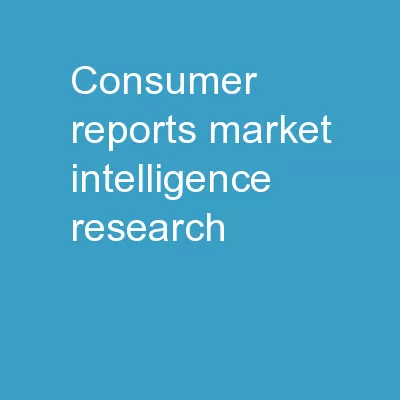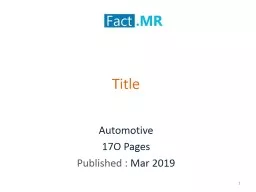PPT-Consumer Reports Market Intelligence Research
Author : phoebe-click | Published Date : 2018-11-09
December 3 2015 Profile of Current Donors Prospect motivations and expectations when donating Competitor review Recommendations Contents Profile of Current Donors
Presentation Embed Code
Download Presentation
Download Presentation The PPT/PDF document "Consumer Reports Market Intelligence Re..." is the property of its rightful owner. Permission is granted to download and print the materials on this website for personal, non-commercial use only, and to display it on your personal computer provided you do not modify the materials and that you retain all copyright notices contained in the materials. By downloading content from our website, you accept the terms of this agreement.
Consumer Reports Market Intelligence Research: Transcript
Download Rules Of Document
"Consumer Reports Market Intelligence Research"The content belongs to its owner. You may download and print it for personal use, without modification, and keep all copyright notices. By downloading, you agree to these terms.
Related Documents














